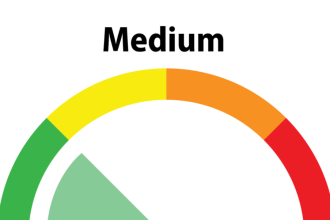In today’s interconnected world, it is essential to ensure that everyone, regardless of their abilities, can access digital content. But did you know that digital asset accessibility is not just a moral imperative but also a legal requirement? This blog post explores why digital accessibility is crucial for compliance and how it can benefit your business. Keep on reading to learn more!
Introduction to Digital Accessibility
Defining Digital Accessibility
Digital accessibility means designing digital content and tools that can be used by everyone, including individuals with disabilities. This includes websites, mobile apps, documents, and multimedia. Accessibility ensures that all users have the same access to information and functionality.
Importance in Today’s Online Landscape
In a world where online presence is essential for businesses, making digital content accessible is more important than ever. Not only does it promote inclusivity, but it also opens up your brand to a larger audience. Accessibility is no longer optional; it’s a must-have in the digital age.
Significance for All Users
When digital assets are accessible, everyone benefits. Accessible content supports people with visual, auditory, motor, or cognitive impairments. It also improves the user experience for people without disabilities by offering better usability and more efficient navigation.
Understanding Accessibility Compliance
Legal Landscape Surrounding Digital Accessibility
Various laws and guidelines mandate digital accessibility, ensuring that no one is excluded from accessing online services and information. These regulations aim to provide equal opportunities and prevent discrimination against individuals with disabilities.
Key Laws and Guidelines
Among the critical regulations are the Americans with Disabilities Act (ADA) and the Web Content Accessibility Guidelines (WCAG). The ADA mandates that businesses and organizations make their digital platforms accessible to individuals with disabilities. WCAG, on the other hand, provides a robust set of guidelines to help developers create accessible digital content.
ADA and WCAG Explained
The ADA applies to the public and private sectors, ensuring that everyone can access digital services. WCAG offers a comprehensive framework divided into levels (A, AA, AAA) that indicate the accessibility standard achieved. Meeting at least the AA criteria is often considered the baseline for compliance.
VPAT
Another essential aspect of accessibility compliance is the Voluntary Product Accessibility Template (VPAT). The VPAT is a document that assesses how well a product or service conforms to accessibility standards. It is often used by government agencies and other organizations when procuring digital products. And, the new version 2.5 of VPAT is aligned with WCAG 2.1, emphasizing the importance of digital accessibility. Not only does the VPAT help with compliance, but it also serves as a guide for developers to improve their products’ accessibility.
Benefits of Digital Accessibility Beyond Compliance
Improved User Experience and Customer Satisfaction
When digital assets are accessible, everyone can use them efficiently, leading to better user experience and customer satisfaction. This can result in increased customer loyalty, improved brand reputation, and potential new customers through word-of-mouth recommendations.
Better SEO Ranking
Compliance with WCAG guidelines also improves search engine optimization (SEO) ranking. By making your website more accessible, you
The Business Case for Digital Accessibility
Benefits Beyond Legal Compliance
While adhering to accessibility laws is crucial to avoid legal repercussions, digital accessibility offers numerous business benefits. It goes beyond ticking a compliance checkbox and contributes to long-term success.
Improved User Experience
Accessible websites are easier to use and provide a seamless experience for all visitors. Features like keyboard navigation, text-to-speech, and adjustable text sizes make your website more user-friendly, keeping visitors engaged.
Expanding Reach and Boosting SEO
By making your digital assets accessible, you can reach a wider audience, including the millions of people with disabilities globally. Additionally, accessible websites tend to rank higher on search engines, as they often adhere to best practices that search engines reward.
Strategies for Implementing Digital Accessibility
Practical Steps for Businesses
Implementing digital accessibility involves several practical steps. Start by conducting an accessibility audit to identify areas that need improvement. Then, prioritize changes based on impact and feasibility.
Enhancing Digital Accessibility
Focus on creating accessible content from the ground up. Use clear and concise language, provide alternative text for images, ensure sufficient color contrast, and enable keyboard navigation. Regularly test your content with accessibility tools and real users.
Tools and Resources
Numerous tools and resources can assist in enhancing digital accessibility. Automated testing tools, such as WAVE and Axe, can help identify accessibility issues. Additionally, organizations like the World Wide Web Consortium (W3C) offer guidelines and best practices to follow.
In the end, digital asset accessibility is crucial for compliance and goes beyond just meeting legal requirements. It promotes inclusivity, improves user experience, expands reach to a wider audience, and boosts SEO ranking. While there may be challenges in achieving accessibility, organizations must overcome misconceptions and invest in creating accessible content from the ground up. As technology continues to evolve, it’s essential to keep up with accessibility guidelines and continuously improve digital assets for equal access for all.












